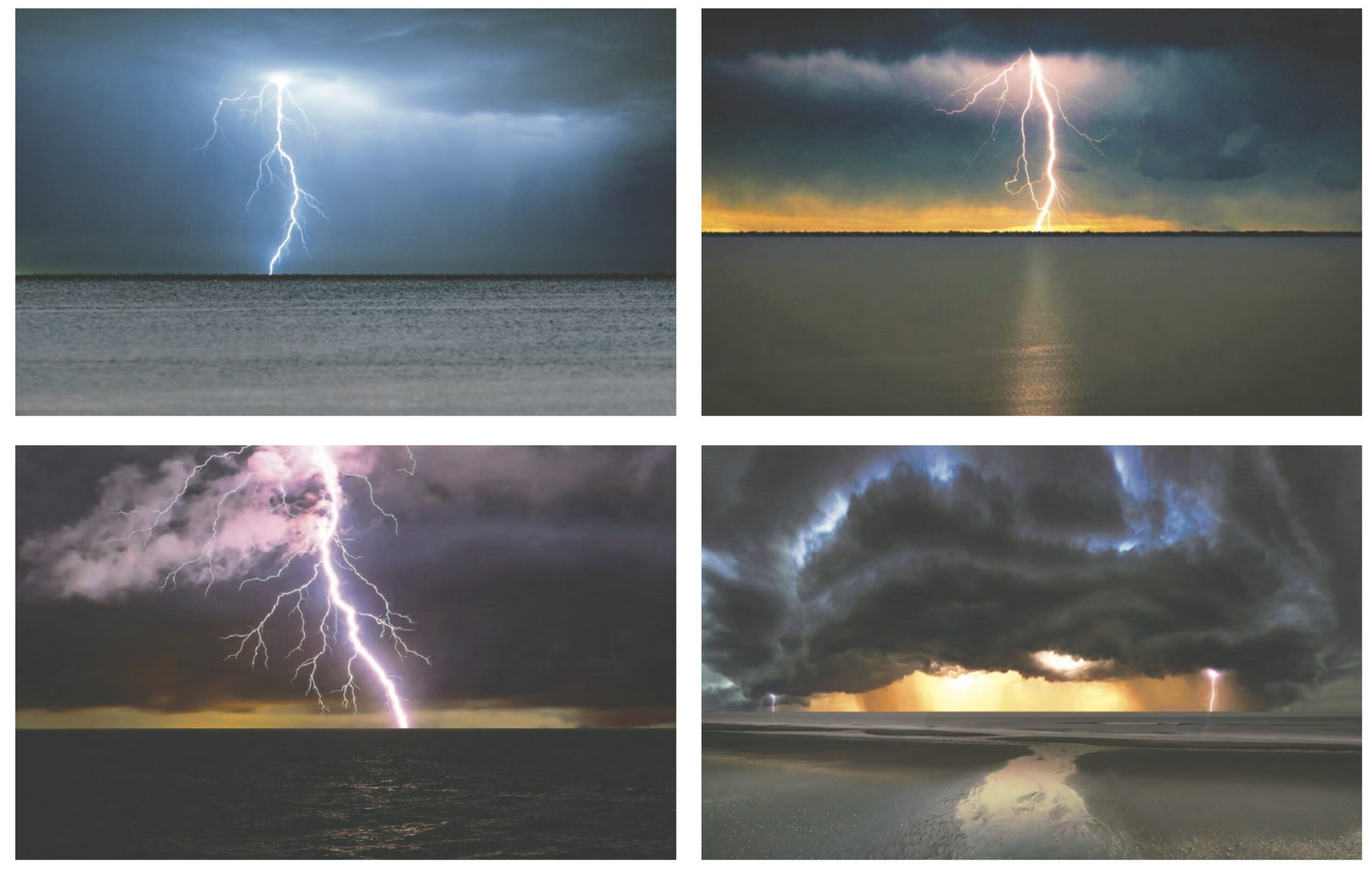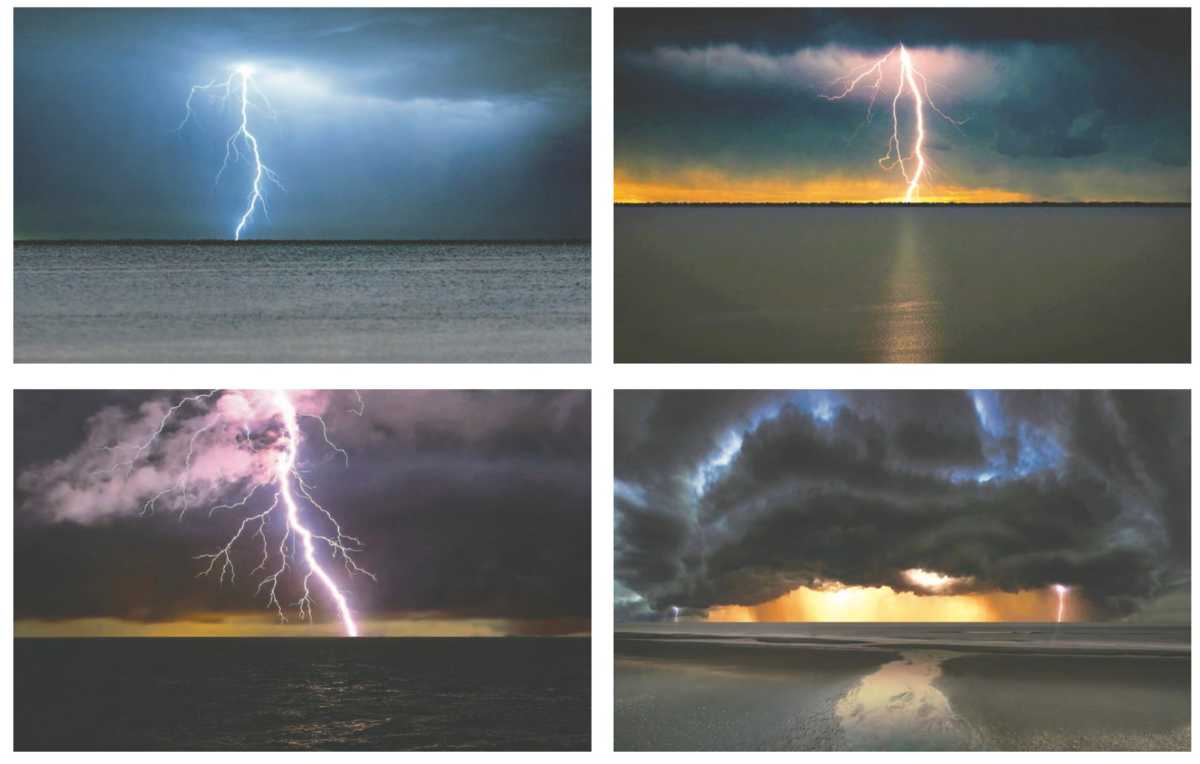
Photos by Bob Anderson – All rights reserved.
By Bob Anderson
As you well know, several times a summer our island becomes a target for electrical storms, typically moving from west to east. But did you know there are more than 18 distinct kinds of lightning?
They’re differentiated by strength, appearance, source and target. The most common types are cloud-to-ground lightning, cloud-to-cloud and ground-to-cloud (yes, that’s a real thing).
Appearances range from channels to ribbons, sheets and even beads. Plus there are rarely seen exotic types, such as ball, rocket and staccato lightning. There are even superbolts, which are much more powerful than ordinary lightning, and sprites, which shoot upwards from cloud-tops toward space.
Cloud-to-ground lightning begins with a stepped leader moving down from the cloud, which is met by an invisible streamer moving up from the ground. That’s followed by the return stroke, which is the flash we actually see. That usually travels from cloud to ground, but occasionally it’s a more powerful positive stroke traveling upwards.
The diameter of the actual bolt varies from the width of a finger to the width of your arm, but it looks bigger because it’s so extremely bright. The instantaneous heating up to 30,000 degrees during the return stroke causes the air to expand explosively. The powerful shock wave that creates produces thunder.
You should seek shelter as quickly as possible at the first sign of thunderstorms since lightning can travel many miles. In fact, the longest lightning bolt ever measured was over 80 miles! The expression “like a bolt out of the clear blue sky” comes from rare but dangerous strikes from storms before they are in proximity.
The safest place to shelter during a thunderstorm is in a house or vehicle. Basically, when you see (or hear) a storm coming, get inside right away. If you’re in the shower, finish up fast. And if you’re stuck outdoors, stay away from trees and power poles. Ideally, find a dry low spot, crouch down on the balls of your feet and wrap your arms around your knees. This way, in case of a strike in the immediate vicinity you expose the smallest surface for the lightning to hit, while also preventing large ground voltages from flowing through your body.
A house that’s hit by lightning must be monitored for at least 24 hours after the strike to ensure there are no internal fires slowly burning inside the walls that could later flair up and cause disaster. One thing to watch out for after a strike is failed electrical circuits, which can indicate that the wiring inside the wall took the brunt of the load and melted. The fire department may decide to check your home with a thermal camera that can detect heat sources within walls.
The lightning rod was invented by Benjamin Franklin way back in 1752 and it works by channeling the energy of a strike safely along a thick copper or steel wire directly into a stake driven into the ground. Yet remarkably few people on Fire Island install them, even in the most exposed beachfront and bayside houses or in sparely treed communities such as Robbins Rest or parts of Davis Park. They’re not very expensive and can literally save your home. Installing a lightning rod can also help save anything electronic that happens to be plugged in at the time of a strike, including TV sets, smart phones and even all those expensive LED lightbulbs you just bought. They can all be fried by a strike on or near your house.
As for judging the distance of a storm, you see the flash of lightning almost instantly, but the sound of thunder takes a lot longer to reach you. That difference in speed can help you gauge how far away the lightning is, and whether subsequent strikes are getting closer. At sea level sound moves at about 1,100 feet per second. So just count the seconds from the flash to the thunder, every five seconds equals about a mile of distance between you and the lightning. For example, if you see the flash and then count 15 seconds to the thunder, the strike was three miles away.
Stay safe and enjoy the show!


























